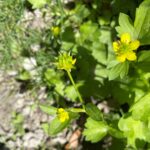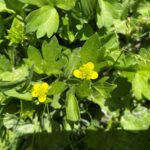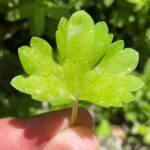Προβατάρης, Ρανούνκουλος ο κρασπεδωτός
Etymology of Ranunculus marginatus: "Ranunculus" in Latin means "little frog" and it is called as such by Pliny either because many Ranunculus species are aquatic or found near water, just like frogs or because many grow where frogs abound. "Marginatus'' in Latin means in botany "with a distinct border", and refers to the seeds on the achenes.
The Ranunculus genus in Cyprus is rich, with at least 22 kinds (species or subspecies), a little hard to distinguish one from the other. Three of these kinds are exclusively encountered in occupied northern Cyprus.
Ranunculus marginatus is an annual herb growing up to 45 cm high. It is not encountered in the majority of the Nicosia district and that of Kerynia. It grows at an altitude of up to 1425 metres. Ranunculus marginatus's flowering period is from April to June. It can be found in places near running water, roadsides, wet meadows and limestones.
How to identify Ranunculus marginatus:
Ranunculus marginatus has small flowers and (in Cyprus) it is similar to Ranunculus muricatus. What is more distinctly different between these two is the achenes. Ranunculus muricatus's achenes are echinate or strongly muricate, shortly echinate-muricate, with a broad flat marginal wing; Ranunculus marginatus's achenes are muriculate, papillose or smooth, not echinate or strongly muricate, narrowly bordered, and with a short (usually upturned) beak. Additionally, Ranunculus muricatus's basal leaves are reniform, deeply 3-7-lobed.
Ranunculus marginatus has similarities with Ranunculus arvensis as well, but the latter has basal leaves spathulate-cuneate, dentate at apex; its upper leaves are with linear divisions; its achenes appear with a long slender spine.




